Bangladesh's export-oriented shrimp industry suffers from a supply shortage and a lack of market access. Exports have gradually dropped from around 55,000 MT in 2016 to only 25,000 MT in 2023. Around 17,500 MT would be accounted for by black tiger shrimp, and the remainder would consist of a combination of farmed freshwater prawn and wild-caught shrimp. The EU accounts for 70% of the export volume, the UK 12%, and the US 6%. Within these markets, Bangladesh sells mainly to the food service segment, which does generally not have very stringent quality and sustainability requirements but is extremely price-driven—incentivizing buyers and suppliers to drive the price to the bottom, harming the perception of the quality and reliability of Bangladeshi shrimp in the international market.
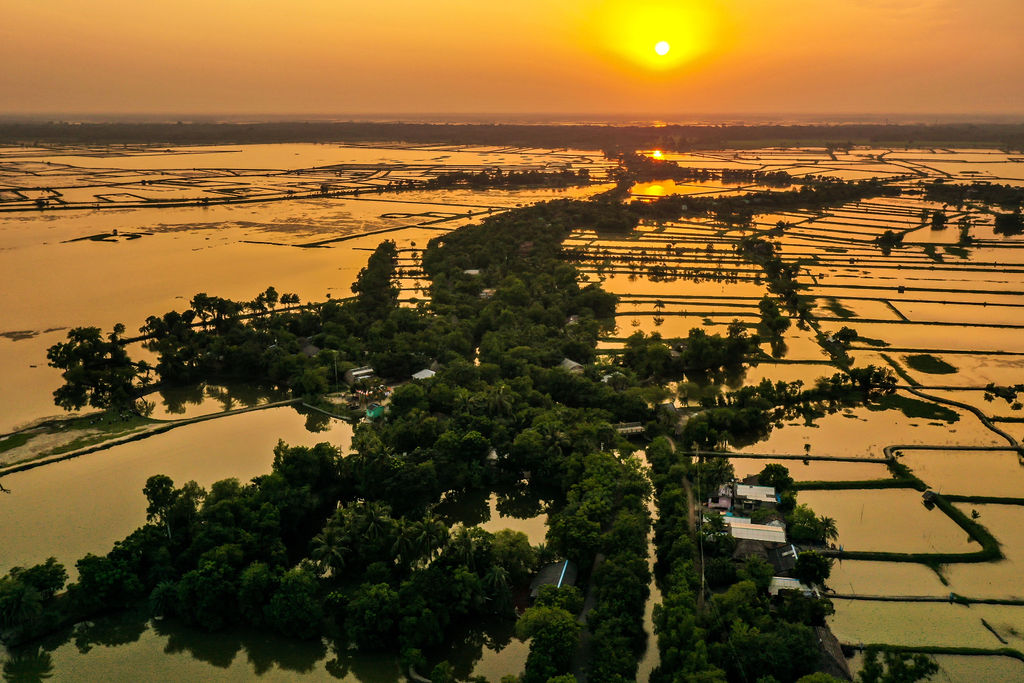
Credit: Lenk Group and ASC Foundation
One reason for the supply shortage is the growth of the domestic market. Official production numbers suggest that shrimp production in Bangladesh is relatively stable at around 135,000 MT, of which 70,000 MT is black tiger shrimp, 55,000 MT is freshwater prawn, and around 10,000 MT is wild-caught shrimp. Although these figures are most likely considerably inflated, these numbers confirm a considerable domestic shrimp market. According to industry sources, the domestic market may currently absorb around 50% of black tiger production. This would be around 35,000 MT, which was previously primarily exported. 35,000 MT of harvested shrimp equals around 20,000-25,000 MT of finished product, meaning that with an export volume of just 17,500 MT, the domestic market's actual consumption of black tiger shrimp may be more than 50% and could even have reached 60-70%.
Due to the lack of raw materials and low shrimp prices, processing plants go bankrupt, workers lose their jobs, and farmers aren’t paid as much as possible for the shrimp they harvest. With a lack of long-term vision from most of Bangladesh’s shrimp exporters, it’s a vicious cycle that is hard to break. However, a few companies are trying to change the tide. In this blog, I discuss the efforts of three of these companies, and at the end, I will draw some conclusions about what may happen if they are successful.
I hope this blog will motivate buyers who thought negatively about Bangladesh but would like to source high-quality black tiger shrimp to change their minds and start buying again. Are you such a buyer? Contact me, and I will get you in touch.
In 2024, the Shrimp Blog is supported by: Inve Aquaculture, Taprobane Seafoods, DSM-Firmenich, Zeigler Nutrition, Bioiberica, Megasupply, American Penaeid, Omarsa and eFishery.

Lenk Group Develops “Luna Shrimp Farms” Brand to Come at Par with Vietnam and Other High-Quality Black Tiger Suppliers
The Company
Established in Thailand in 2003, Lenk Group has offices in Bangladesh, Germany, Thailand, and Vietnam. It procures a wide range of seafood products, but the core of its business is shrimp from Bangladesh, India, and Vietnam. In 2023, it handled 2,000 MT from Bangladesh in service and import, making it one of Bangladesh’s top five dealers. Heiko Lenk, Lenk Group’s owner, visited Bangladesh for the first time in 1997 and has visited the country at least three to four times a year for the last ten years. He is arguably the most experienced buyer of Bangladeshi shrimp.
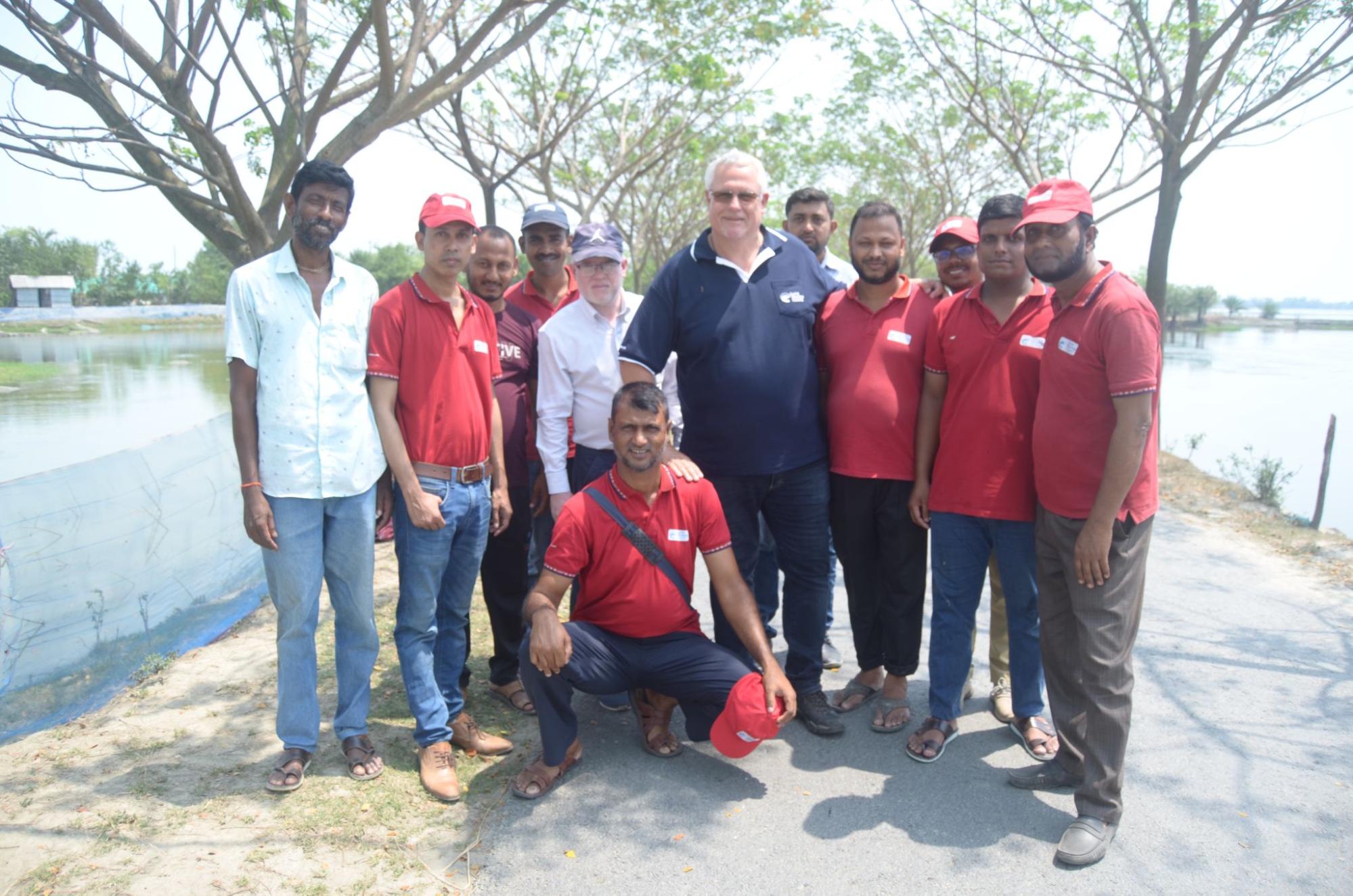
Credit: Lenk Group
The Challenge
Heiko Lenk explains the challenges in Bangladesh’s shrimp industry that made him organize his business differently than most other importers. Unlike most other shrimp producers, Bangladesh must still diversify its export markets. Today, more than 90% of its exports go to the EU. The primary EU market is price-oriented. Generally, buyers don’t ask for quality, but price is eventually more critical even if they do. Instead of creating incentives to invest in the supply chain and processing plants to maintain the quality of the products, the focus on price incentivizes adding water to gain weight.
Without a strong vision from most of Bangladesh’s exporters on how they want to build their market image abroad, heavy glazing (adding water around the shrimp) and soaking (absorbing water into the shrimp) have become standard practices. Shrimp from Bangladesh, with 40% glazing and 30% water added through soaking, is not rare. Glazing and soaking are not illegal, but to make things worse, buyers and sellers sometimes agree to apply a glazing and soaking tolerance (e.g., 2-5%) when they label the final product. If mislabeled, consumers eventually get less shrimp and more water than they should. Due to a lack of enforcement of EU labeling regulations, the mislabelling of shrimp from Bangladesh is widespread, according to Lenk, and may be as high as 80%.
Unfortunately for Bangladesh, the vicious cycle of demand and supply of the cheapest possible products has led to a situation in which many companies have gone bankrupt, workers have lost their jobs, farmers don’t get the income they deserve, and the country misses the opportunity to have the shrimp industry as a long-term source of foreign exchange.

Part of the Solution
With shrimp from Bangladesh, Lenk Group mainly supplies private-label customers from the EU’s food service segment. Some of these customers are relatively high-end buyers who must maintain their brand image, have stringent product specifications, and focus on quality. To cater to these customers, Lenk Group needs to be able to assure the quality of the products they source from Bangladesh and the correctness of the label.
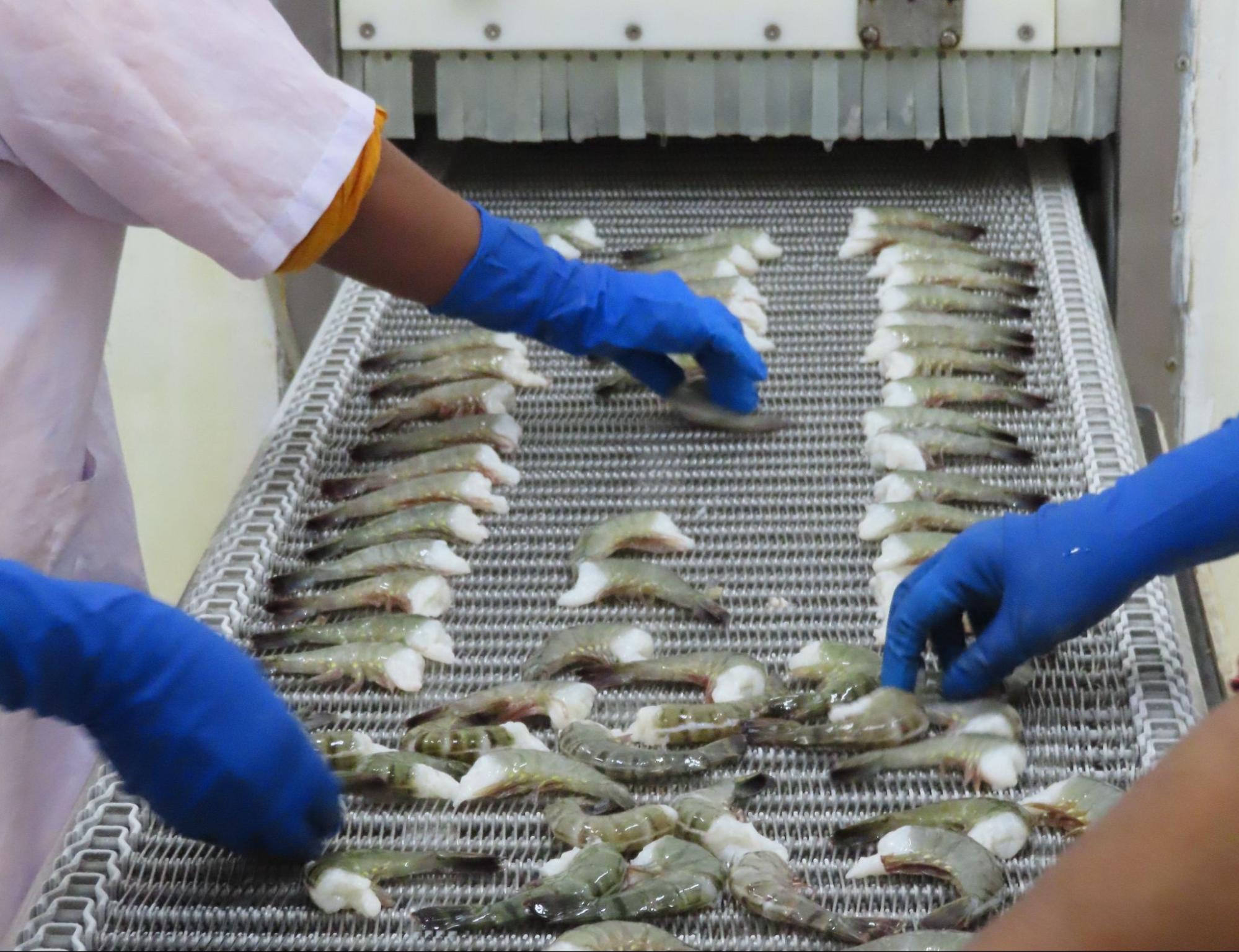
Credit: Lenk Group
Rather than working through a local sourcing agent, Lenk has developed his team in Bangladesh. Heiko Lenk and his squad visit most of the exporters regularly. They inspect the plants and meet with the owners. Based on their assessment of the quality and reliability of the processing plant and the owner, they categorize the exporters into four buckets: (A) can get unlimited orders, (B) can get up to five orders, (C) can get one or two orders and (D) blacklist. Depending on the customer’s order’s product specifications and price requirements, Lenk can match the buyer and the seller in the best way possible. While the lowest prices may be found in categories B, C, and D, suppliers will be selected from category A if a customer needs quality.
Lenk explains that due to the nature of the business, his company will always supply the specs its customers require. However, his company abstains from mislabelling. Although this limits his business, it has kept him away from the practices that harm the Bangladeshi industry and has made Lenk Group arguably one of the most well-respected suppliers of Bangladeshi shrimp in the EU market.
Taking It to the Next Level
Although Lenk Group’s procurement strategy has already put it in a good position, Heiko Lenk was convinced he could and should do more. According to him, Bangladeshi shrimp at the farm is among the highest-quality shrimp you can eat. To illustrate that, he shares a story about eating raw shrimp at a farm in Bangladesh to convince the farmers of the value they have at hand but would never do the same in a processing plant. Due to the fragmented supply chain, the unfortunate role of agents, and the lack of direct engagement between processors and farmers, the exceptional quality of Bangladeshi shrimp is lost when the shrimp reaches the factory.
In 2020, Heiko Lenk established Luna Shrimp Farms, a premium private-label shrimp brand, to overcome this challenge. With Luna Shrimp Farms, Lenk hopes to penetrate new markets, adding to its existing business. Luna refers to the moon and the lunar cycle harvesting frequency that Bangladesh’s shrimp farms work along. The company has established a collection center network in the delta where its team collects shrimp directly from farmers. The company, headed by its local head of supply chain and his team of farm extension workers, already works with around 1,400 shrimp farms. Once delivered to the collection center, the shrimp are put straight on ice and brought to Gemini Seafoods, the processing plant owner Lenk has partnered with. Here, Lenk’s team supervises the processing of its shrimp right after delivery and before the processing plant processes other raw materials. Once packed in its private-label brand, its products are stored in a cold storage facility at Gemini Seafoods.

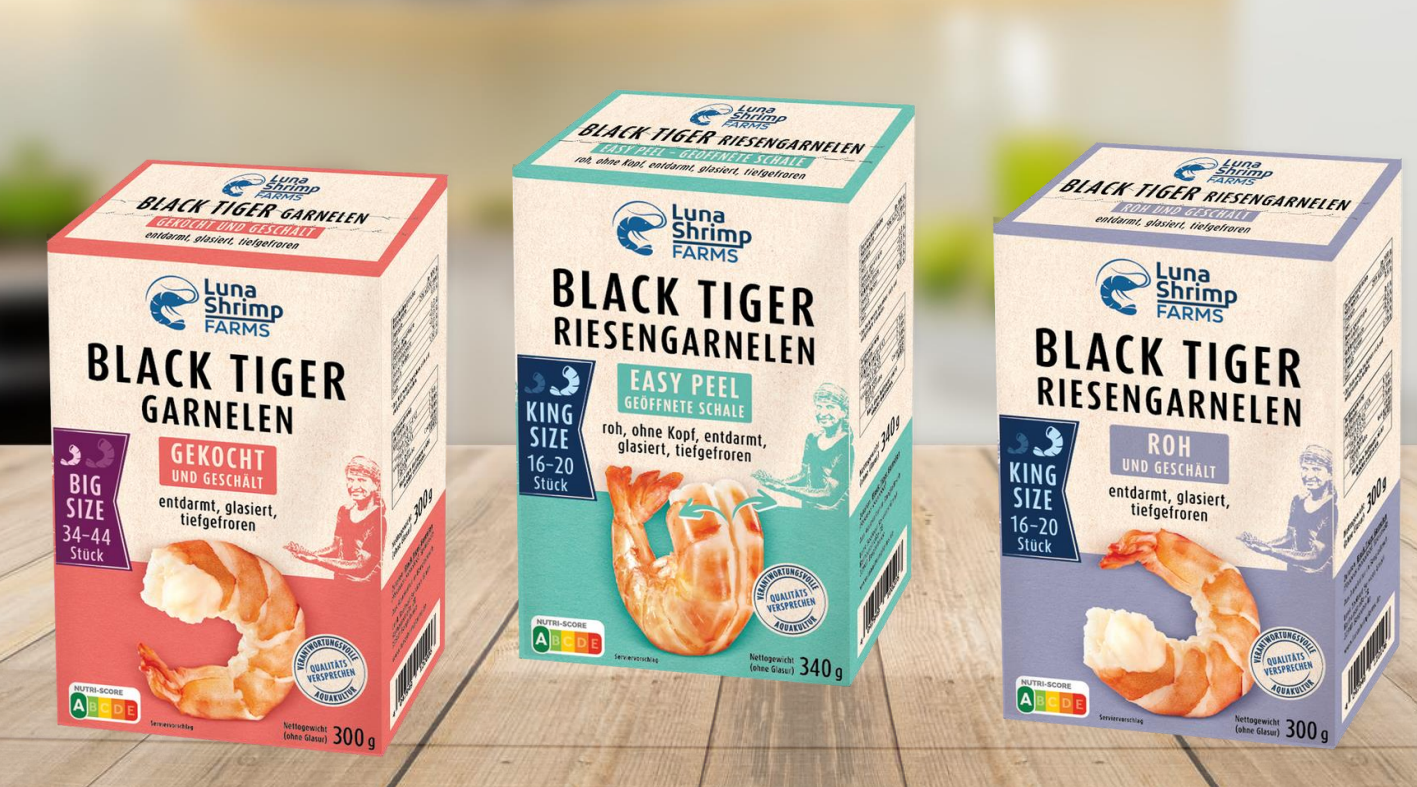
Credit: Lenk Group
In 2023, Lenk convinced German retailer Kaufland to add Luna Shrimp Farms products to its shrimp category. To be able to sell the product in its stores, Lenk had to engage with the Aquaculture Stewardship Council (ASC). Although certification of large numbers of small-scale farmers is often perceived as complicated and expensive, ASC offered to onboard some of the farmers from which Luna Shrimp Farms was sourcing in an Aquaculture Improvement Program. According to its sourcing policy, Kaufland can sell seafood from AIPs if certification is unavailable. Today, the first 125 farmers have reached phase III of the first AIP pilot in Bangladesh. In phase IV, these farms may become eligible for actual ASC certification. In 2024, the first 125 MT from the project will be supplied to Kaufland. By starting a second AIP with another 280 farms, Lenk hopes to grow this volume to 400 MT in 2025. He is convinced that other retailers in countries like Austria, Switzerland and Benelux will be ready to start selling the ASC AIP product in their stores as soon as it is available.
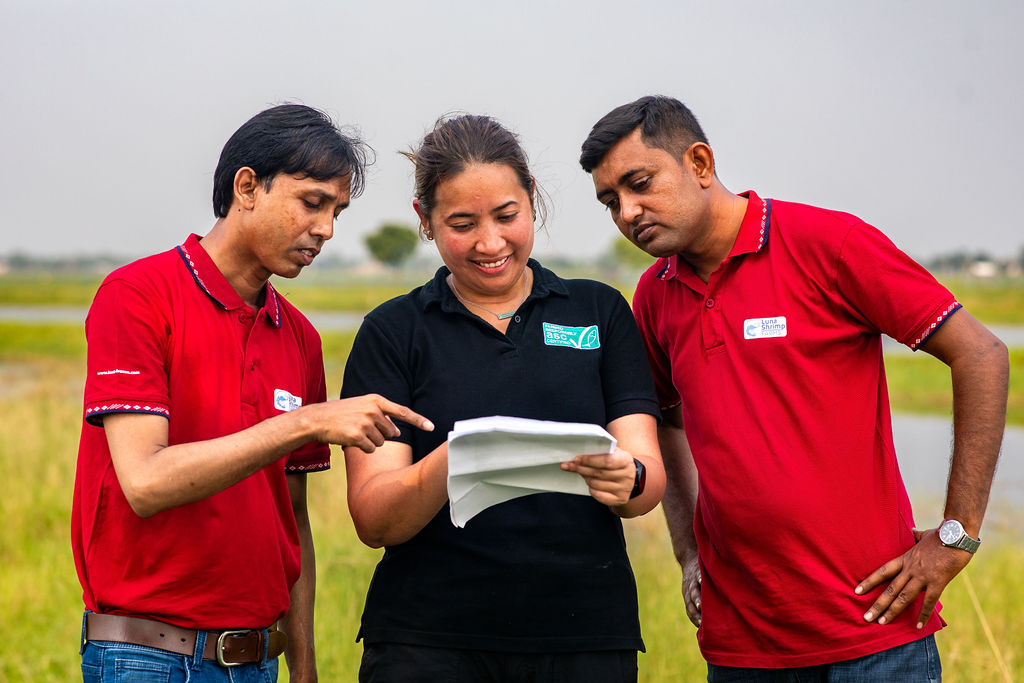
Credit: Lenk Group and ASC Foundation
While certification is required for most of the EU’s retailers, this is not the case in Asia. Lenk acknowledges his ambition to deliver high-quality black tiger shrimp from Luna Shrimp Farms in Bangladesh to customers in China, Hong Kong, Japan, Singapore, Taiwan, and other Asian markets. If successful in diversifying the market, Lenk hopes to grow the total volume of shrimp sold from Luna Shrimp Farms to 1,000 MT, as such a volume is needed to run a long-term resilient, independent business.
The quality of Luna Shrimp Farms’ products puts Lenk at par with high-quality black tiger shrimp suppliers from India, Indonesia, and Vietnam. This allows him to sell at a higher price of $1-3 per kg, improving his business and the livelihoods of the farmers he works with.

TotalFood Processing to Deliver a New Level of Quality to Change Buyers’ Perception of Bangladeshi Shrimp
The Company
Rezaur Rahman, the Managing Director and Co-Founder of TotalFood Processing, is a London-based British Bangladeshi citizen. In his hometown, Khulna, he grew up amidst the shrimp industry. He moved to the UK in 1991, where he met his wife, who ran her own pharmacy business in London. She inspired him to start as an entrepreneur himself. Given his roots, he decided to start a shrimp distribution business despite his family having never been directly involved in the industry.
He started supplying shrimp from a small freezer in the back of his wife’s pharmacy to Bengali restaurants in London. His first customer from that day is still with him today. When his business evolved, he established TotalFood Distribution Ltd, a cold store in a prominent location in London, where he services restaurants across South East England, primarily freshwater prawns (M. Rosenbergii) from Bangladesh.
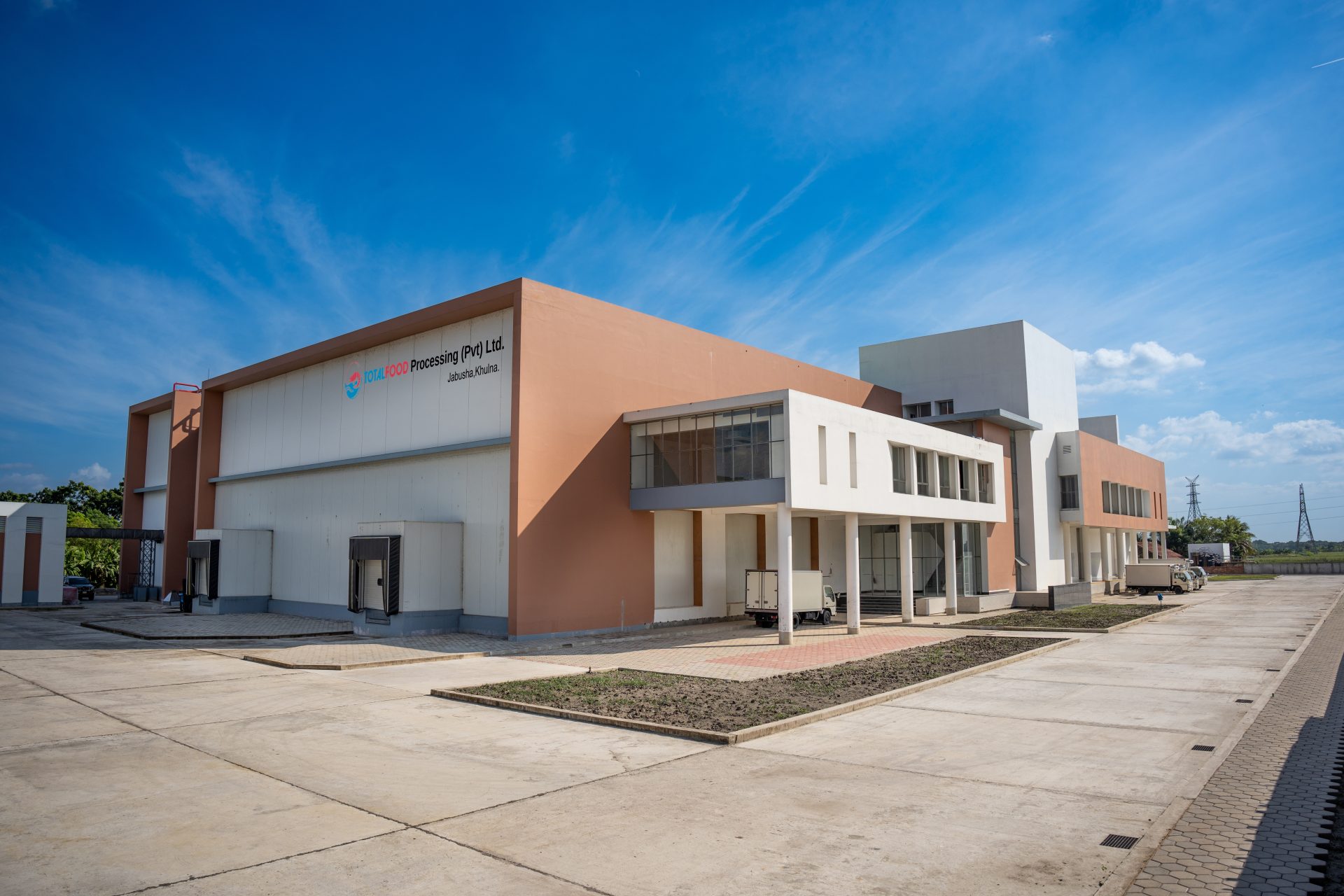
Credit: TotalFood Processing / Rezaur Rahman
Only recently, in 2024, he opened his state-of-the-art processing plant in Khulna as the next step in his entrepreneurial journey. His brother, a professor at Khulna University, and his son, based in the UK, are deeply engaged in the business. It’s a family affair. The family aims to help Bangladeshi farmers get more value for their unique products while developing a healthy, profitable business.
The Challenge
Rezaur is fully aligned with Heiko Lenk about the observation that while Bangladesh’s shrimp farmers produce beautiful, unique shrimp for which buyers would pay a premium, once these products leave the farms, this quality is quickly lost. Due to this, the market perception of Bangladeshi shrimp has deteriorated. Unfortunately, he states, there is a lack of entrepreneurial spirit and vision among Bangladesh’s exporters and a failure to understand their potential; there is a unique value proposition for Bangladeshi shrimp originating from the Sundarbans, the world’s largest mangrove forest.
In addition, he acknowledges the shortage of raw material supply to the processing plants, which, according to him, is only partially due to the relatively higher prices the domestic market can offer. It is also because production is dropping. Although official figures are absent, farmers explain that they face production constraints due to the lack of quality of post-larvae and low survival in the shallow extensive ponds. Some of the farmers he talks to have decided to stop growing shrimp and now produce local white fish instead. Shrimp production is on the decline.

A State-of-the-Art Processing Plant with Stringent Raw Material Sourcing Policies
Triggered by the belief that he could find a solution for Bangladeshi shrimp's negative market image, Rezaur decided to build a state-of-the-art, European-standard (not referring to EU regulations but to the modern nature of European food processing establishments) seafood processing plant in Khulna, Bangladesh. This plant started operations in March 2024.
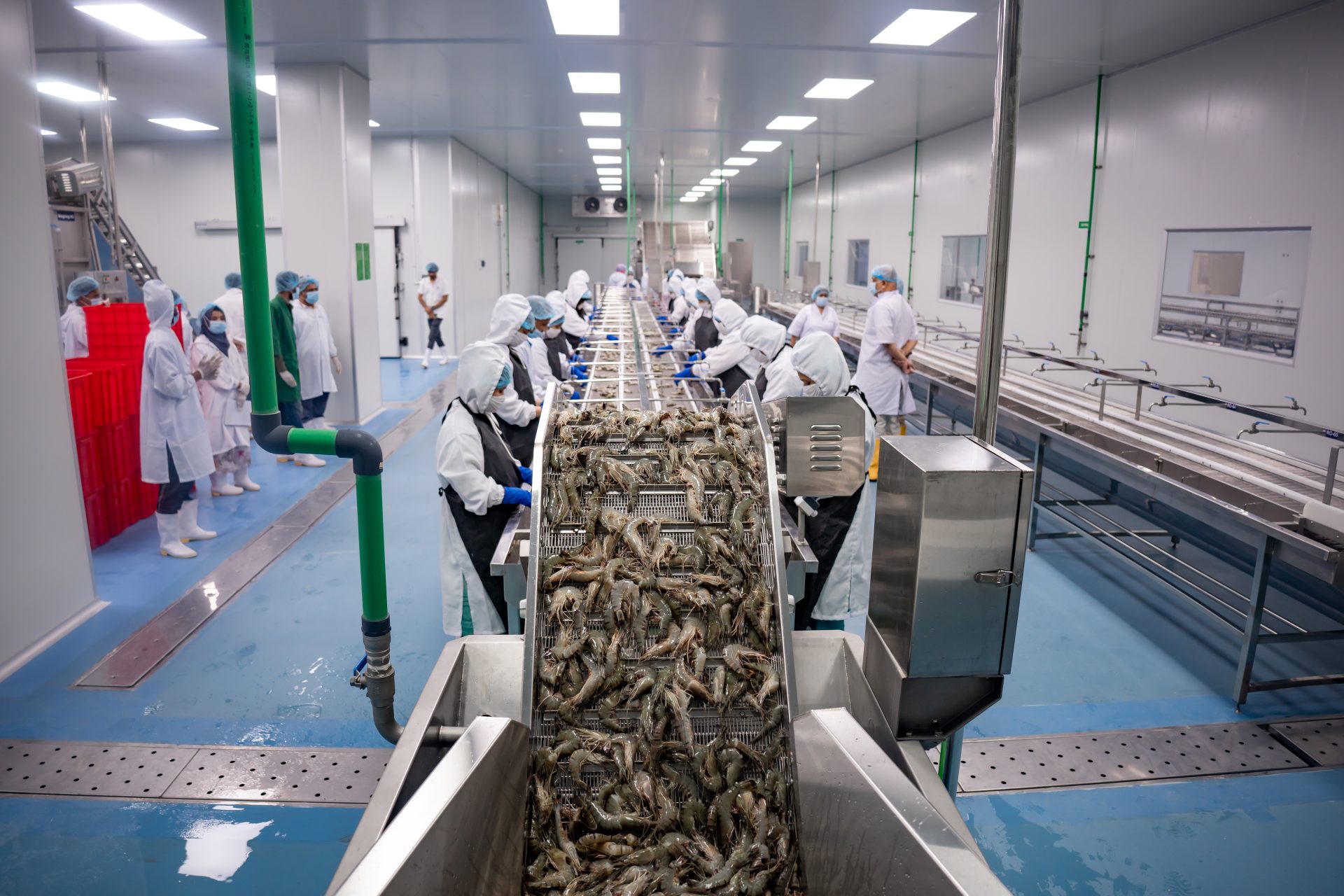
Credit: TotalFood Processing / Rezaur Rahman
According to Rezaur, the factory is the newest and largest in Bangladesh, delivering the highest-quality finished products in the country. He has invested in top-notch processing equipment, which includes semi-automated pre-processing equipment, a shrimp cooking line (not steam but water cooking, which allows for customized recipes), IQF lines, multi-head weighing machines, and a line for coated (marinated, battered, and breaded) products. As such, the factory can supply a wide range of products, from basic raw to cooked to further value-added products.
The factory should produce up to 5,000 MT of finished products when running at total capacity. The plant will source approximately 70% of P. monodon and 30% of M. rosenbergi. P. monodon will be sold on the open market to establish a niche brand, and M. rosenbergi will be primarily supplied to his distribution business in the UK to meet UK Bengali chefs' long-standing demand for quality shrimp. To optimize capacity utilization, the factory also processes local white fish for distribution to the ethnic wholesale market abroad.
Maintaining the quality of the products starts with a 0% tolerance for adulterated products. If any adulteration is detected, products are rejected at the factory gate. To get suppliers to abstain from unwanted practices, he pays the supplier the day after receiving raw materials, much quicker than most other processors. Establishing his brand image also means that his company abstains from mislabeling. He has a promise and ambition to change customers’ perceptions of the quality of Bangladeshi shrimp and, by doing so, attract new buyers willing to pay the real value for Bangladeshi shrimp. Rezaur states he has no choice.
Taking Control of the Supply Chain to Secure the Supply of Large Volumes of High-Quality Raw Materials
When the plans for the operation in Bangladesh started to evolve, Rezaur planned to collect shrimp directly from the farms; he soon realized that due to the harvesting nature of extensive shrimp farms, this is not feasible. As a result, he currently sources raw materials from the middleman, which other processors also buy. However, his stringent sourcing policies ensure that the products he receives are of a higher quality than products that other processors receive. However, the quality could be much higher if he had supply in his own hands. And that’s what he is working on.
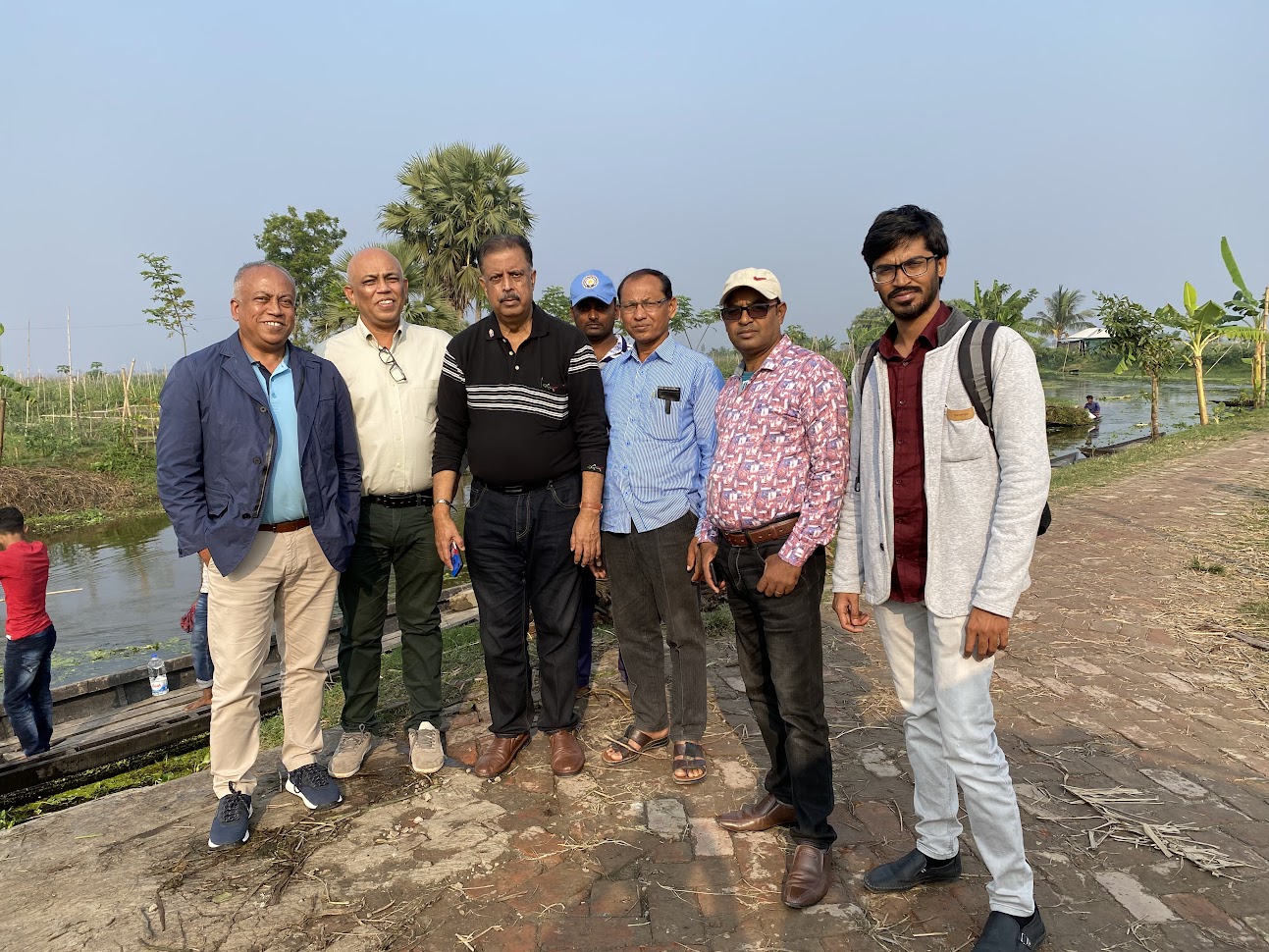
Credit: TotalFood Processing / Rezaur Rahman
Soon, Rezaur will open collection centers close to the farms. These collection centers will have a chilled room and flake ice facilities close to the farms and will be led by experts trained by TotalFood. To establish the network, Rezaur will work together with a major shrimp feed dealer, and the first collection centers should be ready before February 2025, when the next farming season starts. The centers will provide convenience for farmers by selling feed, probiotics, and minerals. Instead of TotalFood’s team going from farm to farm, the farms will come to the collection center, where the raw materials will be checked, received, and prepared for transport. The margin gained by working around the middleman will be invested in managing the collection network. Rather than paying a premium price, farmers will be paid cash right after receiving raw materials, offering substantial financial benefits.
But Rezaur aims to do more. He has started to develop ponds around his factory, which will be ready for the next farming season. These ponds will be used for R&D and demonstration and include extensive and semi-intensive ponds. He aims to enhance farmers' knowledge and skills by providing technical know-how and lab services. He will establish a training center in TotalFood premises to demonstrate good practices and show farmers how to increase stocking density from less than 1 PL/m2 today to 8-10 PL/m2.
At the same time, Rezaur has engaged with Seafood Watch to analyze the current cultivation practices of the farmers he sources from and engaging with these farmers to ensure they meet Seafood Watch standards and achieve a yellow or green recommendation, which improves market access to high-end buyers in the US and other overseas markets. Strong ties with the farming community are paramount for successfully expanding TotalFood Processing’s business case.

Changing the Product Market Fit
Like Heiko Lenk, Rezaur is convinced that with these investments, he can pivot away from the lowest-price-oriented buyers and subsequent practices that have caused Bangladesh’s shrimp industry to be on the brink of total collapse. The project he is most enthusiastic about is the engagement with a Southern European buyer of HOSO black tiger shrimp. Acknowledging the struggles of securing high-quality HOSO black tiger shrimp in Asia, this buyer is willing to pay a high price for quality products. The first containers are ordered, and if Rezaur can deliver on his promise, this business will grow, positioning Bangladeshi shrimp in a high-end market segment in Europe. Other opportunities he is pursuing include market penetration in markets such as South Korea, China, and Japan, where buyers are willing to pay a higher price once they understand the quality of the products that can be delivered.
M.U. Sea Foods Bets on the Introduction of L. Vannamei to Improve Raw Material Availability for Processing and Exports
The Company
In 2023, M.U. Sea Foods exported around 800 MT of shrimp, generating around USD 10 million in export revenue. It’s one of the best-known and well-respected shrimp exporters from Bangladesh. Unlike many other shrimp exporters, M.U. Sea Foods is not part of a larger industrial group. It’s a family-run company founded in 1985 fully dedicated to the shrimp industry. It has expanded its processing operations from blast and plate freezers to IQF and cooking lines. In 2023, the company exported around 800 MT of products. Its biggest clients include companies like Lenk Group from Germany and Froconsur from the Netherlands. Today, the company is run by Mr. Shyamal Das, the second generation of the family.
Video: Finest Black Tiger PND by M.U. Sea Foods Ltd
The Challenge
As mentioned in the introduction to this blog, at least 50% but possibly as much as 60-70% of the shrimp produced in Bangladesh is sold to the domestic market as those prices are higher than in the export market. On top of that, production challenges have caused many farmers to stop or limit their stocking activities, further restricting the availability of raw materials for the country’s shrimp processors and exporters. As a result, exports dropped from a peak of around 55,000 MT in 2016 to a low of 24,000 MT in 2023. Of Bangladesh’s 100 shrimp processing plants, today, only around 40 are active. Most of the 40 active processing plants run at only 30-35% of their capacity. Earnings from shrimp exports now hold the seventh position of foreign exchange earners, while previously being second. As such, the significance of the shrimp industry for Bangladesh’s economy is dropping. As one recent article has suggested, Bangladesh’s shrimp industry is dying, putting the livelihoods of 75,000 shrimp farmers and many more workers in the shrimp supply chain at risk.

The Solution
As Shyamal Das highlights in his presentation at the Global Shrimp Forum in the Netherlands, he views the introduction of L. vannamei in Bangladesh as a significant opportunity to increase the availability of raw materials for Bangladesh’s shrimp processing plants. He believes that once produced at scale, Bangladesh should be able to make around 30,000 MT of L. vannamei shrimp annually, which can replace P. monodon in the domestic market. The 30,000 MT of P. monodon can be redirected to the shrimp processing and exports sector, and shrimp exports may grow back to around 45,000 MT.
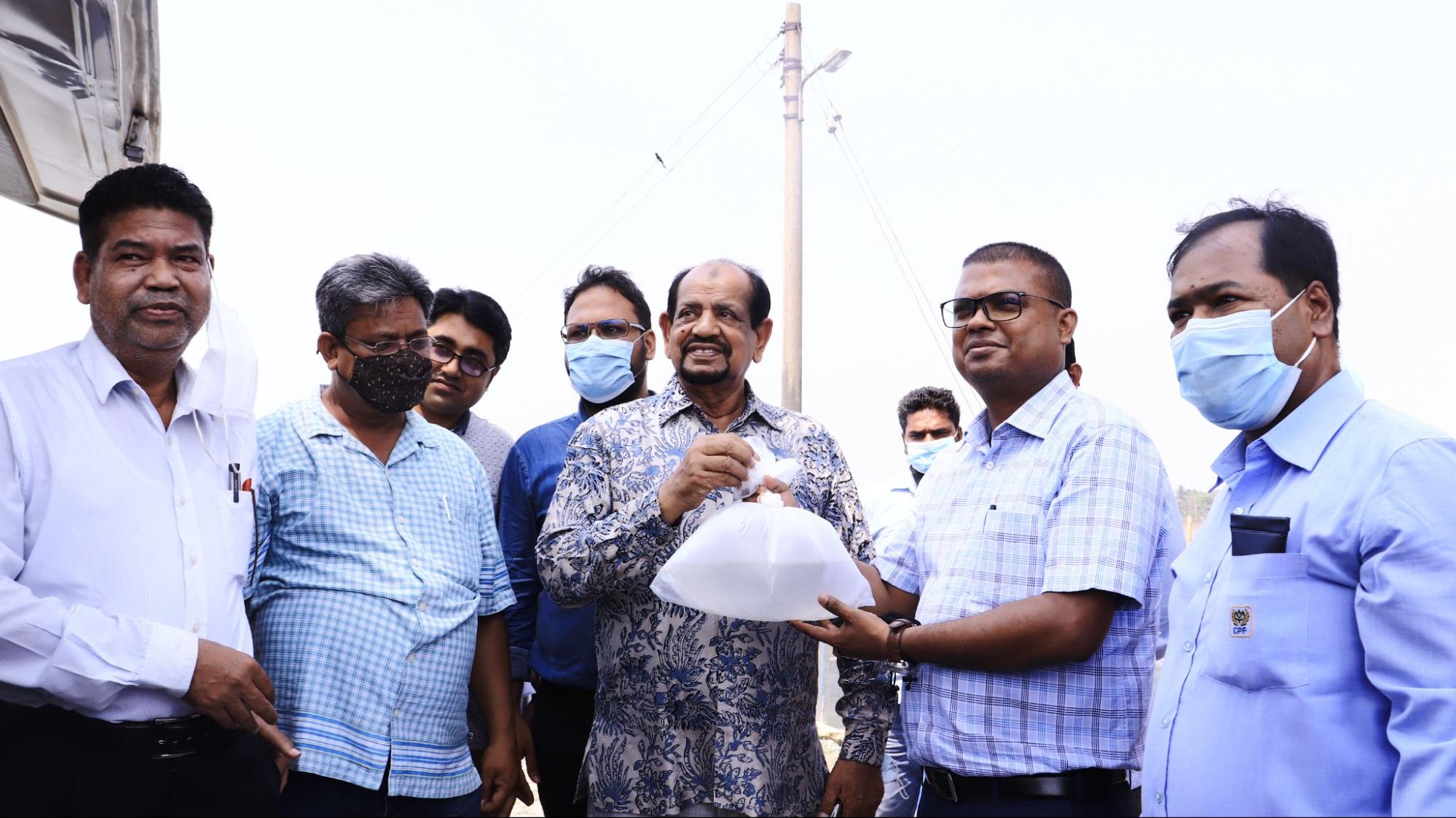
Credit: M.U. Sea Foods Ltd
In 2020, the Department of Fisheries (DoF) permitted two pilot projects on vannamei shrimp farming for the first time. After one of the pilots was successfully concluded, the government allowed eleven more firms, including M.U. Sea Foods Ltd, Grow Tech Aquaculture, and Fahim Seafood to farm the shrimp variety on a trial basis. After these pilots had been concluded successfully, in early 2023, the Bangladesh government permitted the imports of L. vannamei post-larvae (PL). Two or three hatcheries import L. vannamei PL from India to produce adult broodstock and sell PL to farmers, and 25 semi-intensive and intensive farms received a permit to farm L. vannamei.
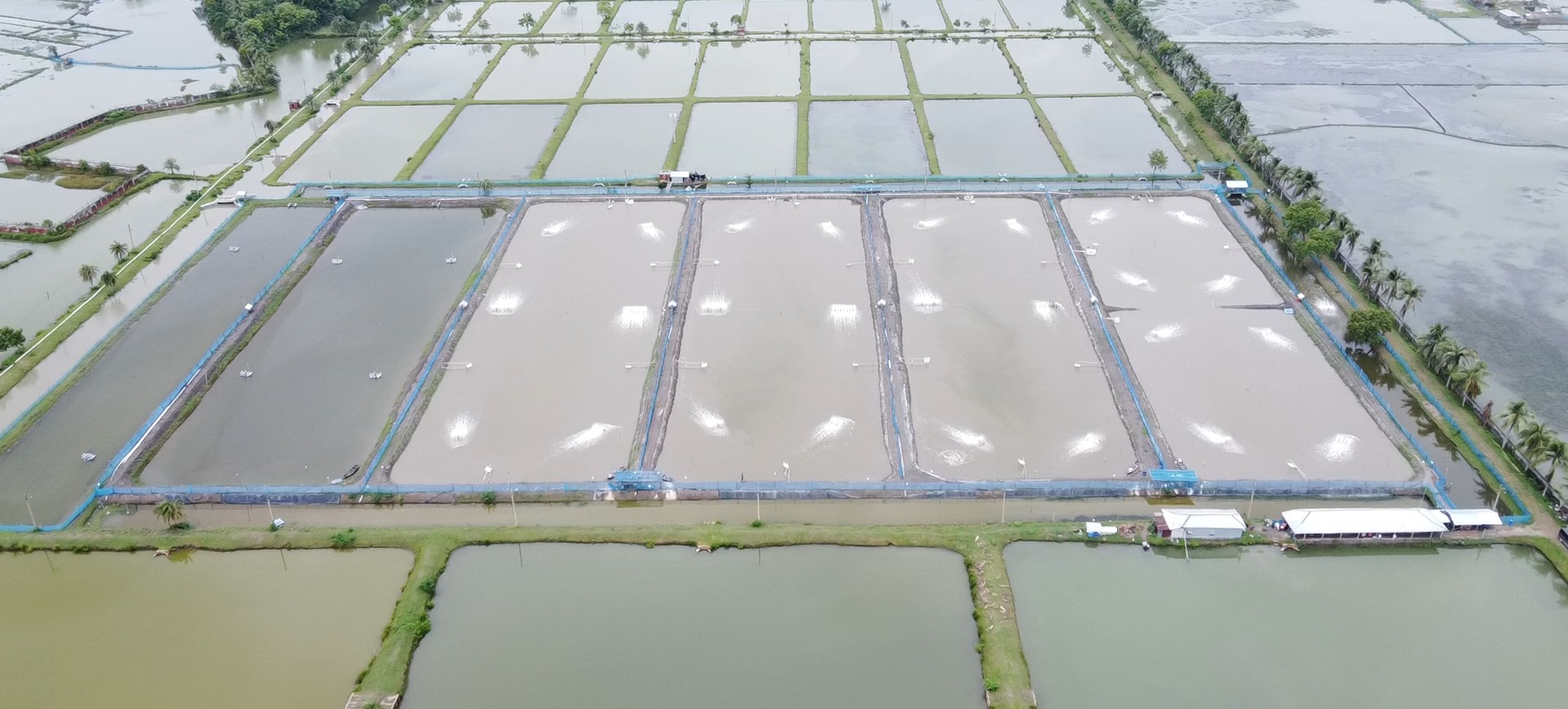
Credit: M.U. Sea Foods Ltd
By July, only seven to eight of the 25 farms are believed to have started production, and only one (Seamark) has completed a production cycle. Seamark, a major exporter, has implemented a very intensive production method that requires significant investments but yields up to 80 MT per ha. Shyamal himself has started commercial production as well. J.B.S Food Products & Industries Ltd, M. U. Sea Foods’ sister company, farms L. vannamei on its farm in Botiyaghata. In its first commercial crop, at the farm, which consists of five grow-out ponds, the company produced 21 MT of L. vannamei with semi-intensive production methods.
Like Shyamal’s farm, most other farms permitted to produce L. vannamei use semi-intensive methods requiring much less investment. Nevertheless, initial investment and high operational costs are mentioned as significant barriers to the quick expansion of L. vannamei production, and substantial volumes may not be harvested until the financial year 2025-2026.

The Product Market Fit
Despite some people's skepticism about the competitiveness of L. vannamei production in Bangladesh, Shyamal eventually believes L. vannamei will become a crucial piece of the puzzle to help Bangladesh’s shrimp industry regain its competitive edge.
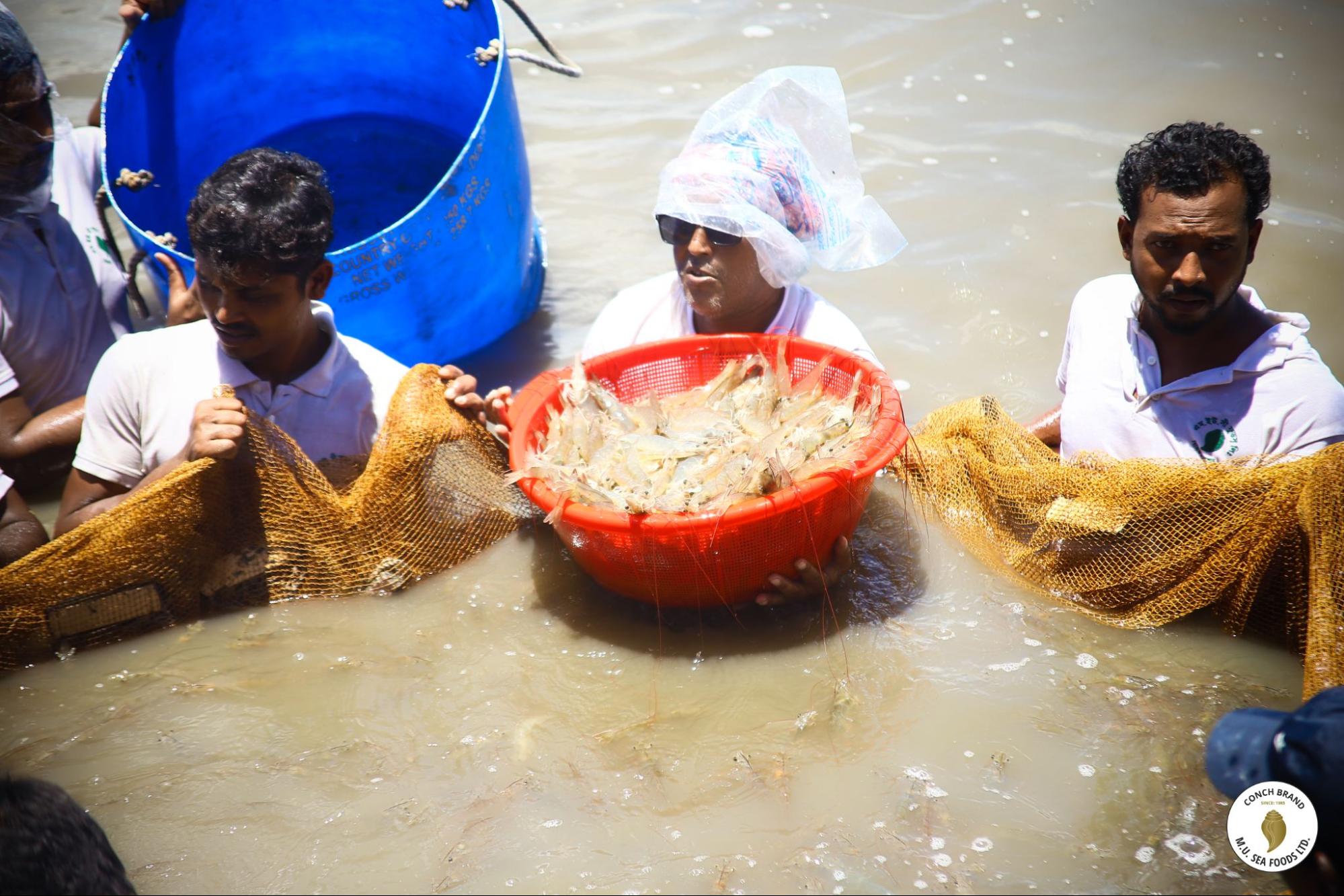
Credit: M.U. Sea Foods Ltd. / Shyamal Das
When he thinks about markets, Shyamal first considers the Bengali expat community. More than 10 million Bangladeshis live abroad and take great pride in contributing to the country's economy by sending back much-needed foreign currency. For many of these expatriates, purchasing products that remind them of home holds significant emotional value. Shrimp, a staple in Bangladeshi cuisine, is a product often bought from retail outlets abroad. Unfortunately, much of the shrimp they find comes from other countries.
If Bangladesh’s L. vannamei shrimp were readily available in these markets, it would resonate deeply with expatriates, evoking a sense of connection to their homeland. The pride of supporting their country by buying locally produced shrimp would fulfill their desire for a taste of home and enhance Bangladesh’s reputation as a trusted global supplier.
But Shyamal thinks about more than exports. Bangladesh has a growing domestic demand for shrimp, driven by its increasing middle class and awareness of its health benefits. These consumers like to buy shrimp but are also price-sensitive. Bangladesh can meet this demand by increasing the local production of L. vannamei while strategically redirecting its higher-value P. monodon shrimp toward exports, supporting shrimp processors to keep their businesses running.
Shyamal argues that it would benefit the whole industry if the semi-intensive shrimp farms, about 2,000 hectares of which most still produce P. monodon, would adopt their farms and start producing L. vannamei. While growing P. monodon, many farms underperform in productivity and profitability. The farms would become more profitable by converting to L. vannamei production—known for its higher yields, shorter growth cycles, and resilience to environmental stress. At the same time, Bangladesh would increase the overall shrimp output and reduce the risks associated with relying heavily on one species, diversifying Bangladesh’s shrimp basket for domestic consumers and customers abroad.
Conclusion
What the three companies have in common is that they strongly believe that a resilient future for Bangladeshi shrimp is only possible if the market perception of their product improves. They all do this by focussing on producing unadulterated, correctly labeled, high-quality products. The three companies may not change the tide individually. Still, if they are successful and inspire other entrepreneurs to follow suit, they may be on the right track to create a more resilient future for the industry.
While perspectives on whether introducing L. vannamei is the right thing to do vary among domestic industry stakeholders and stakeholders abroad, it’s clear that to keep factories running, the current decline in the availability of raw materials for processing and exports needs to be turned around. I believe that under the right conditions, with the proper regulatory framework, technical support, and financial incentives, L. vannamei could be another piece of the puzzle to steer Bangladesh’s processors away from the brink of total collapse.
Are you inspired by these companies' efforts, and do you want to connect with them? Let me know, and I will make the connection.
